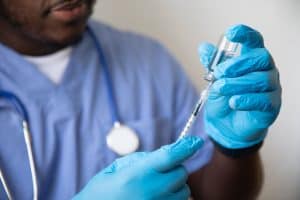UN says Treatment 2.0 approach needed for AIDS
pharmafile | November 25, 2010 | News story | Research and Development, Sales and Marketing | AIDS, HIV, UN, UNAIDS
A new report on the spread of AIDS has called for the development of new pharma compounds that will lead to a “smarter, better pill”.
While new drugs need to be less toxic, longer-acting and easier to use, reducing the money that patients spend on existing ones is also a priority, says the United Nations Programme on HIV/AIDS (UNAIDS).
“Despite drastic reductions in drug pricing over the past decade, the costs of antiretroviral therapy programmes continue to rise,” its Report on the Global AIDS Epidemic states.
However, the biggest potential savings may in fact not be drug-related, the report finds – instead they could be in areas such as hospitalisation, monitoring treatment and out-of-pocket expenses.
To facilitate this, UNAIDS wants which it calls ‘Treatment 2.0’ to take root, an approach based on simplifying HIV regimens and increasing access to medicines.
Compared with current treatment models, this could save an additional 10 million lives by 2025, the organisation believes.
It also means the number of people newly-infected with HIV could be slashed by up to one million a year –if countries provide antiretroviral therapy to those in need.
In 2009, 1.2 million people received HIV antiretroviral therapy for the first time – an increase in the number of people receiving treatment of 30% in a single year.
Indeed the report’s findings are far from gloomy: it suggests, for instance, that since 1999 – when the epidemic is thought to have peaked – global response has halted and begun to reverse the spread of HIV, with new infections falling by 19% in the past decade.
But this is still some way from what UNAIDS calls its “vision of zero discrimination, zero new HIV infections, and zero AIDS-related deaths”.
Universal access to effective HIV prevention, treatment, care and support remains UNAIDS’ goal. At present, it estimates that of the 15 million people living with HIV in poorer countries, 5.2 million have such access.
The report addresses the problem of patent protection, citing Brazil, Thailand and Ecuador as good examples of where states have used their powers under the TRIPS patent agreement and Doha Declaration to make HIV medicines more affordable.
But it warns that other governments are entering trade agreements with high-income countries that impose intellectual property protection that is stricter than necessary under TRIPS.
Making HIV treatment more effective will mean that sufferers will experience lower rates of diseases such as TB and malaria, the report adds.
In 33 countries, HIV incidence has fallen by more than 25% between 2001 and 2009 – and 22 of these are in the AIDS blackspot of sub-Saharan Africa.
Ethiopia, Nigeria, South Africa, Zambia and Zimbabwe have either stabilised or are showing signs of decline, UNAIDS says.
However, in seven countries (including some in Eastern Europe and Central Asia) HIV incidence has actually increased by more than 25% over the same period, the report found.
Adam Hill
Related Content

Gilead and Merck share data from phase 2 trial of HIV treatment
Gilead Sciences and Merck (known as MSD outside of the US and Canada) have announced …

ViiV Healthcare shares interim data from phase 3 trial for injectable HIV treatment
ViiV Healthcare has announced results from an interim analysis of the phase 3 LATITUDE trial, …

China’s NMPA approves ViiV Healthcare’s Vocabria in combination with Rekambys for HIV treatment
ViiV Healthcare has announced that the National Medical Products Administration (NMPA) of China has approved …








